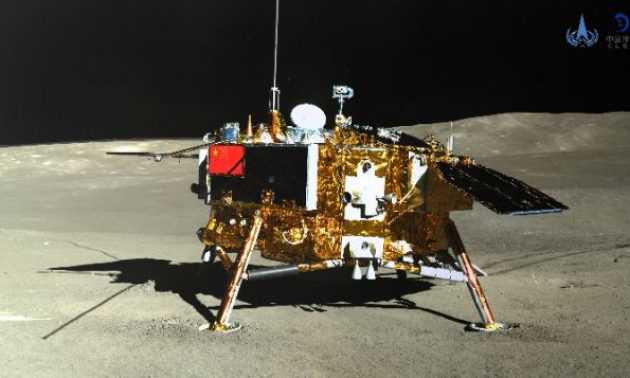Hong Kong experts did key surveys for Chinese lunar probe
17 January, 2019

China tapped into Hong Kong’s technical expertise in the critical selection of a landing site for its Chang’e-4 lunar mission to the dark side of the moon.
It has been revealed that a team of geologists and computer scientists at the Hong Kong Polytechnic University (PolyU) developed a lunar geomorphological and topographic mapping system to help select the January 3 soft landing site on the side of the moon that is never seen from Earth.
PolyU’s team of land surveying and geo-informatics experts amassed vast quantities of lunar remote sensing data and created high-resolution topographic models. They used them to identify two potential landing sites, each covering an area of about 1,500 square kilometers, for the consideration of the China National Space Administration.
The team from Hong Kong also gathered data on as many as 400,000 craters and over 20,000 boulders in the two candidate landing sites. They used the information to analyze the terrain surface and calculate the gradients and slopes in a bid to identify relatively flat sites for the safe landing of the Chang’e-4.
Their analysis looked at specific rocks in the region because boulders there can be as large as 35 meters in diameter, which could have blocked the track of the lunar rover Yutu.
In addition, the surface terrain of the landing region is extremely craggy, with elevation differences of up to 16 kilometers, which required a nearly perpendicular descent design for the probe.
The Chang’e-4 is now in the Von Kármán crater in the South Pole-Aitken basin.
The team’s study of sun illumination and telecommunications was particularly important to ensure ideal conditions to charge the solar panels to power sensors and communications antennae.
The team were responsible for topographic mapping and analysis of the landing site of the Chang’e-3 mission back in 2013.
PolyU has been participating in China’s lunar missions since Chang’e-3. Now its scientists are involved in selecting landing sites for the Chang’e-5 probe, slated to be launched by the end of the year and to include a sample-return vehicle.
A team of optics specialists are working on perfecting a camera system to be mounted on the new probe to take panoramic and high-resolution photos. Similar systems have already been used by Chang’e-3 and 4.
The university has now been commissioned to pool talent to support China’s future mission to explore Mars.
